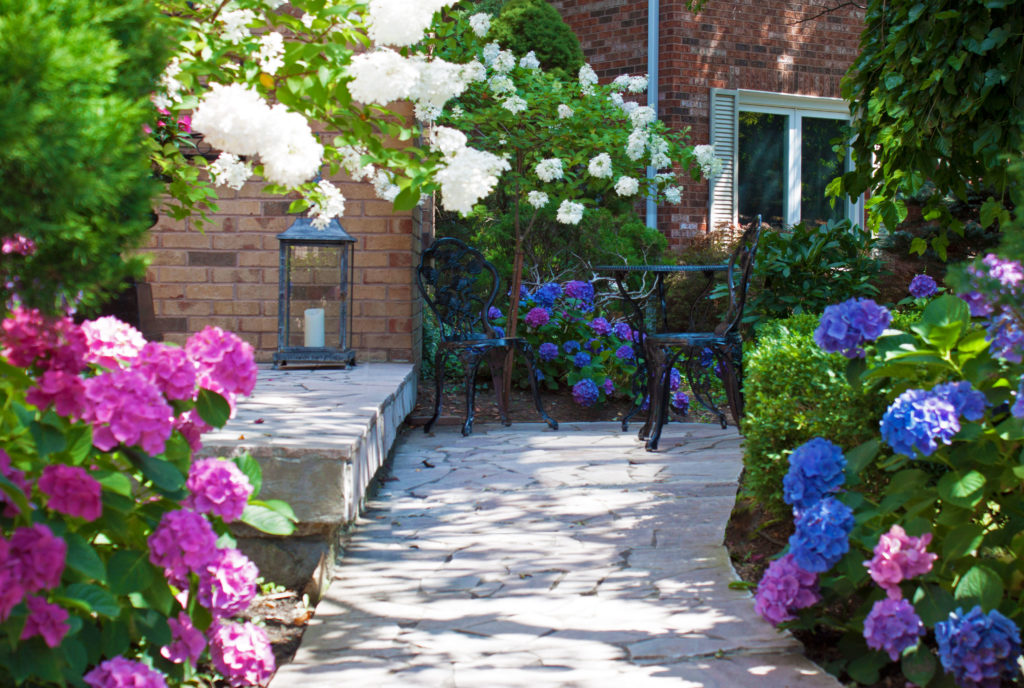
As spring transitions into summer, days get longer, the weather gets warmer, and the place to be is the garden or the backyard! The boundaries between indoors and outdoors begin to blur. Windows and doors are flung open inviting in the fresh air, and fragrant breezes and scents remind us to take notice of what is once again blooming and growing outside!
I have always loved gardens! As a child my mother would often take me to a park within the botanical gardens of the city, and I still remember how it felt. I remember the colours, the scents, the different varieties of foliage and of course the feeling of a fresh and cool breeze while taking refuge in one of the more shaded areas.I was first introduced to this flower when I visited Portugal in the early seventies.
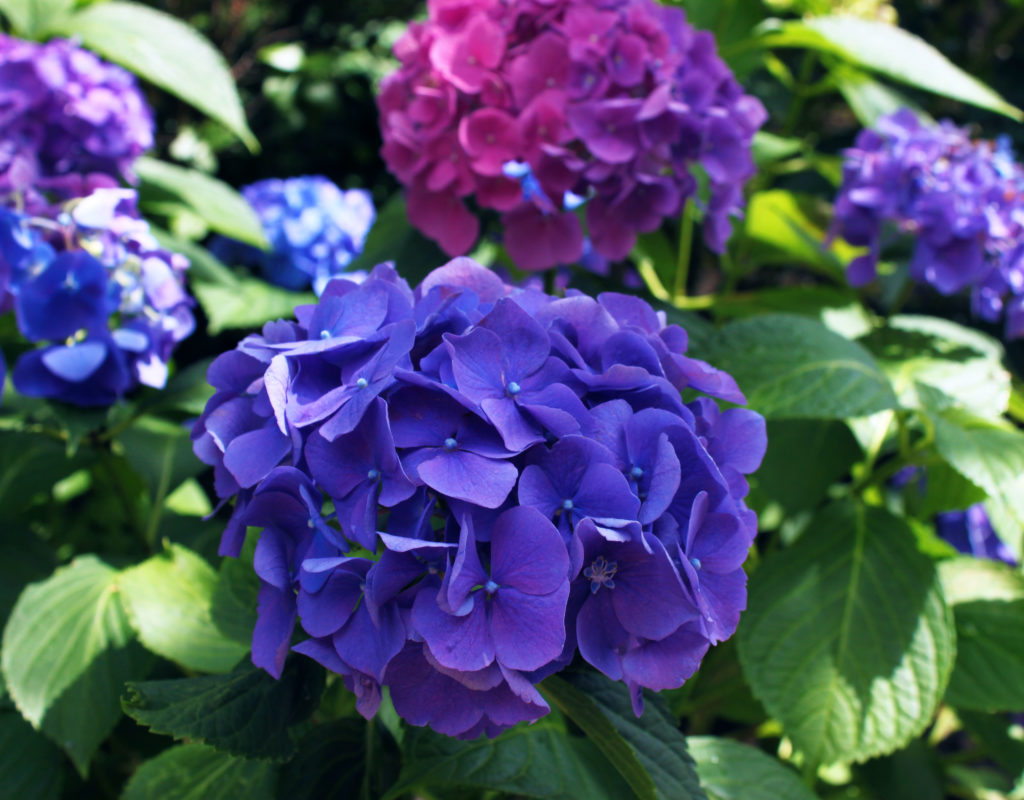
One of the family homes where I was staying had large shrubs beaming with blue hydrangeas. Massive ball shaped flowers filled the front garden and for someone who had always been attracted to blue and white, these beautiful blooms beckoned for my full attention and of course a request to the owner for a few freshly cut ones for my room. Thankfully my request was met by a smile and moments later, a perfect bouquet. I was rather young but very much aware of how colour, and in this case flowers, were going to transform the mood of what were going to be my temporary living quarters.
Fast forward to many years later on the other side of the world. This is Canada, and the weather is one of extremes! Long winters, and sub-zero temperatures are not hydrangea-friendly. I would catch a glimpse of a few at Easter, yet I don’t remember seeing them any other time.
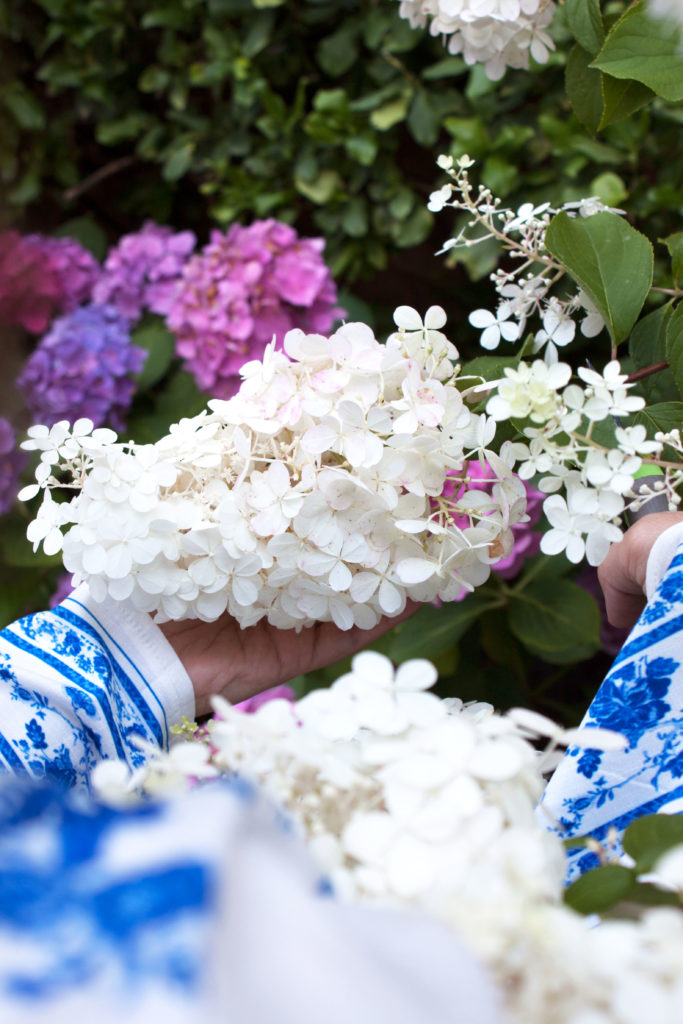
Then came summers in Cape Cod… the kids were little and we loved road trips. We had been told that the Cape was an ideal place for children, and so our summer love affair with Cape Cod began. We made the trek every year until they finished high school. We would travel to Europe and other places in the world, but somehow we would find a way to indulge the kids in what was their favourite home away from home, the friends they encountered year after year while playing on the beach, and where I fell in love, once again with the blue hydrangea!

Here, the Hydrangea Macrophylla, and also the one in the species which actually can be altered from pink to blue, seemed to grow effortlessly! Grand mansions, humble abodes, private and public gardens, it didn’t matter! The blue hydrangea thrived and I am sure still does, in Cape Cod! The close proximity to the sea, the alkalinity of the soil and the weather being big factors.
So, upon my return home and after swooning over other peoples gardens, I decided that the following Easter I was going to stock up, and so I did. I began with a couple of plants. I gave them centre stage in our large front planter urns and as the blooms faded and only green foliage seemed to remain, I decided to plant them in the garden. This was in hope that they would not succumb to the harsh winter I knew would soon blanket them in layers of freezing snow and ice.
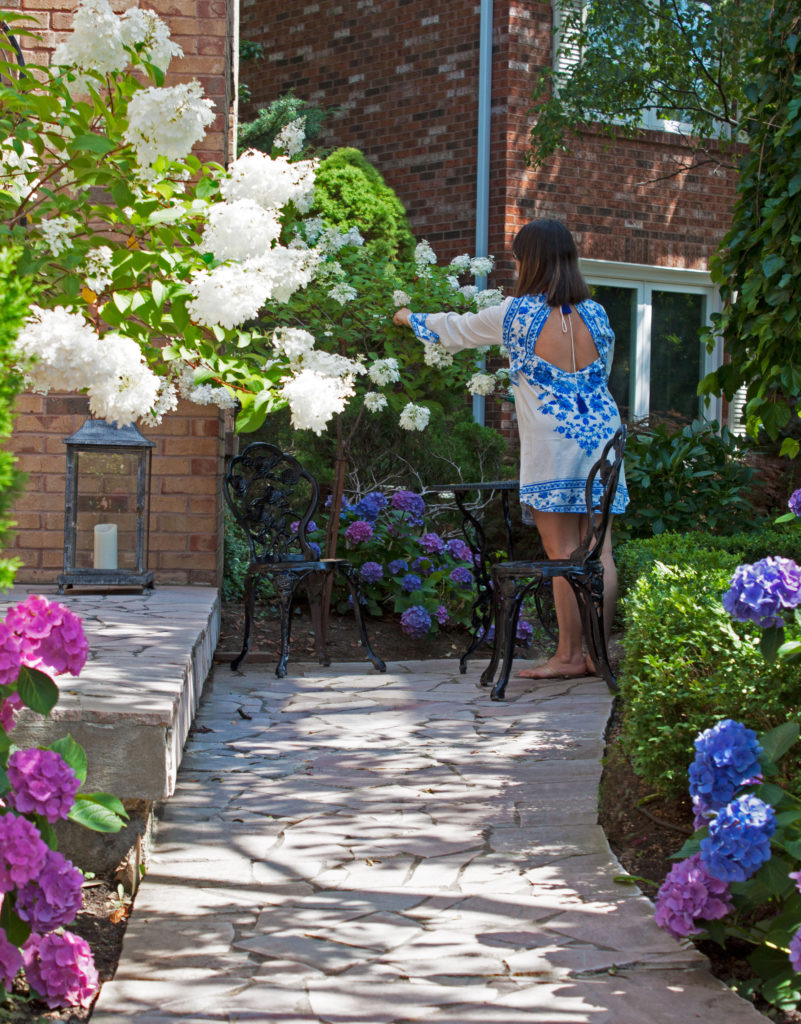
To my surprise they survived! Yes, what looked like dried stalks started to produce tiny little buds and within weeks, full of green leaves. However, getting them to bloom was going to be another story. That would take many a hydrangea shrub, a lot of trial and error adjusting the soil’s pH levels, many summers of a couple of blooms here and there, eventually getting them to bloom like this! I haven’t always been able to continually maintain the rich blue colour in all of them, but here is a bit of what I learned through out this discovering process.
The Hydrangea Macrophylla belongs to the Hydrangeaceae Family of flowering plants, and it is native to Japan. They are cultivated in many parts of the world and I have noticed that they are now available in great numbers and varieties at most local nurseries in Southern Ontario. They are hardy, deciduous shrubs, and survive harsh winters, however they may fail to flower. I have discovered that in my attempt to tidy up and clean up my gardens in the fall, I was also removing the potential flower buds for next year!
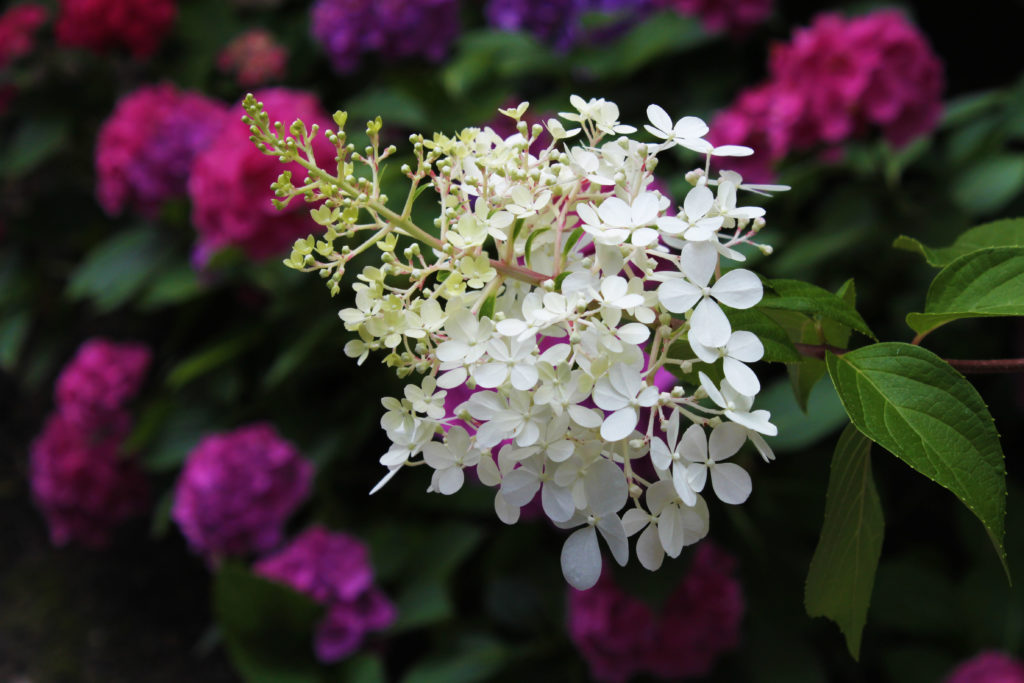
The big leaf hydrangea, the French hydrangea, the mophead, and the lacecap hydrangea, form flower buds in late summer and as a result if you prune at this time or in the fall you will not have flowers the following year. In my case, damage from the cold winter and aggressive pruning meant I had large masses of green serrated leaves, yet no existing blooms.
I now prune only in late spring, and I am careful to leave enough tiny buds even when it looks as if they are dried because this is where my new flowers seem to be coming from, so minimal pruning will produce more blooms!
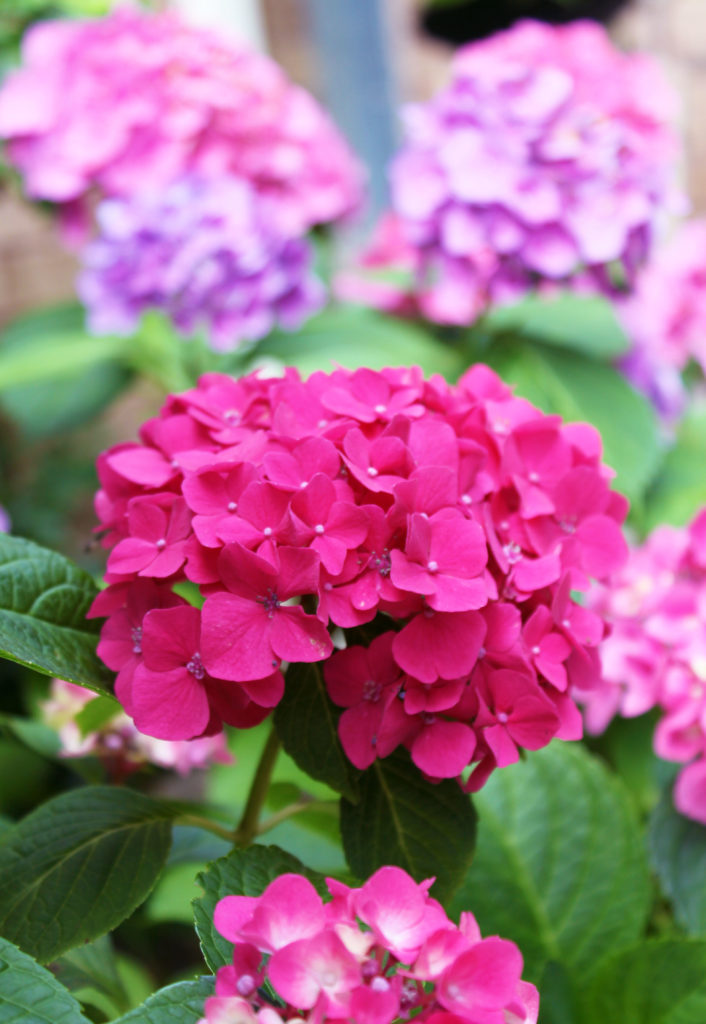
Hydrangeas bloom in various shades of red, pink, blue or even purple. The colour is affected by the pH levels in the soil, and although changing levels is not an easy task, it is possible! Blue hydrangeas need acidic soil with a pH level below 6 with a true blue requiring a pH level of 5.5, to maintain the rich colour. As the pH levels move into 7 and up, the soil becomes alkaline in nature and pink flowers are produced. Sometimes, shrubs can produce several shades of any colour! Depending on your soil, you can add aluminium sulphate to make flowers bluer, or add lime to make them pinker. Apply to the root area of the plant in late fall or early spring.
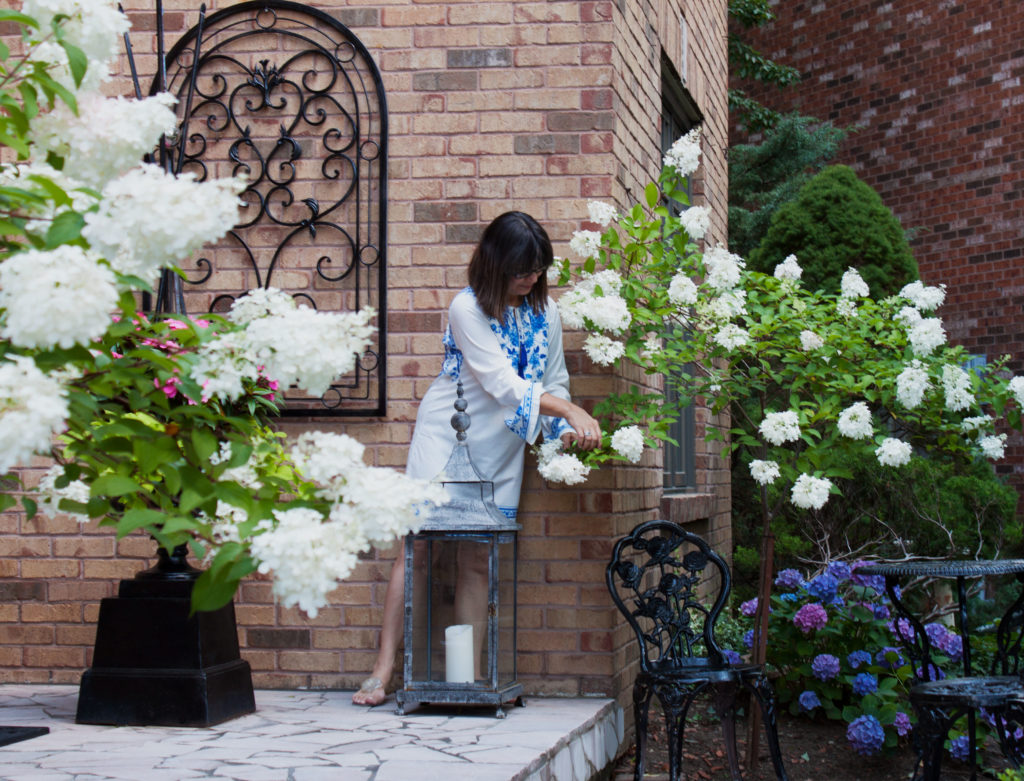
Location is important with a mix of sun and shade. I have found that in our garden, the ones with the most sun, bloom much earlier and provide the most blooms. They also need lots of water and in very hot summer days, will wilt quickly, yet come back to life with a bit of shade and water. Check the different species available for tolerance of both dry soil and sun exposure.
Finally, while they are in bloom don’t be afraid to cut some for use indoors! They will last for days and will dry beautifully while maintaining colour and shape throughout the winter. If you allow the blooms to age on the actual shrub, you will notice the colours turn into beautiful shades of teal and aubergine as the weather gets colder and colder, but harvest before frost arrives.
Be it in the garden, as a singular bud in a simple vase, or carefully arranged in a large bouquet or flower arrangement, hydrangeas of all colours are a people pleaser. Use them to brighten up both interior and exterior living spaces and as far as I am concerned, well, they make me happy!